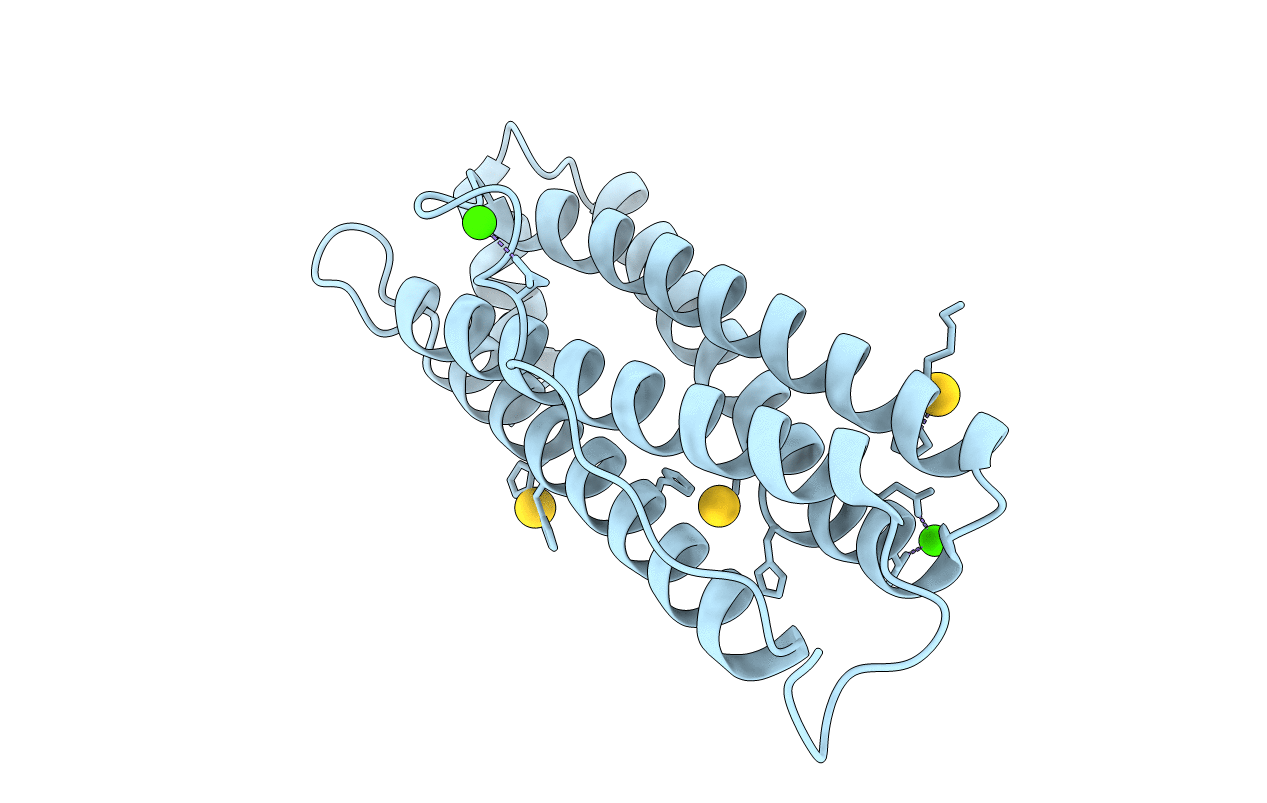
Deposition Date
2008-10-03
Release Date
2008-10-21
Last Version Date
2023-09-06
Entry Detail
PDB ID:
3ES3
Keywords:
Title:
Directing Noble Metal Ion Chemistry within a Designed Ferritin Protein. The Complex with Gold ions. Ferritin H8-H9x Mutant
Biological Source:
Source Organism:
Homo sapiens (Taxon ID: 9606)
Host Organism:
Method Details:
Experimental Method:
Resolution:
2.80 Å
R-Value Free:
0.27
R-Value Work:
0.22
R-Value Observed:
0.22
Space Group:
F 4 3 2


